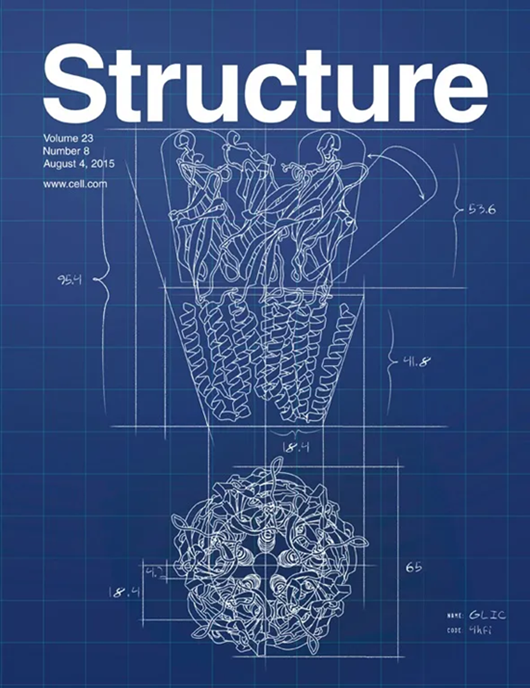High throughput cryo-EM provides structural understanding for modulators of the lysosomal ion channel TRPML1
IF 4.3
2区 生物学
Q2 BIOCHEMISTRY & MOLECULAR BIOLOGY
引用次数: 0
Abstract
Access to high-resolution structural data for protein-ligand complexes is a prerequisite for structure-based medicinal chemistry, where the ability to iterate cycles of design-structure-redesign is highly desirable. For proteins refractory to X-ray crystallography, such as integral membrane proteins, enablement of high throughput structure determination by cryoelectron microscopy (cryo-EM) has the potential to be transformational for structure-based design. We have applied such an approach to the lysosomal ion channel transient receptor potential mucolipin 1 (TRPML1) in complex with ten chemically diverse modulators, both agonists and antagonists. The resulting depth of high-resolution structural data generated provides important insights into protein-ligand structure-function relationships, including mechanistic understanding of ligand-induced channel pore opening and closing. Moreover, the knowledge gained has the potential to support iterative design cycles toward improved modulators of this important biological target.

高通量低温电镜为溶酶体离子通道TRPML1的调节剂提供了结构理解
获得蛋白质配体复合物的高分辨率结构数据是基于结构的药物化学的先决条件,其中迭代设计-结构-重新设计循环的能力是非常可取的。对于x射线晶体学难以处理的蛋白质,如完整的膜蛋白,利用低温电子显微镜(cryo-EM)进行高通量结构测定有可能改变基于结构的设计。我们已经将这种方法应用于溶酶体离子通道瞬时受体电位粘磷脂1 (TRPML1)与十种化学上不同的调节剂(激动剂和拮抗剂)的复合物。由此产生的高分辨率结构数据深度提供了对蛋白质-配体结构-功能关系的重要见解,包括对配体诱导的通道孔打开和关闭的机制理解。此外,所获得的知识有可能支持迭代设计周期,以改进这一重要生物靶标的调制器。
本文章由计算机程序翻译,如有差异,请以英文原文为准。
求助全文
约1分钟内获得全文
求助全文
来源期刊

Structure
生物-生化与分子生物学
CiteScore
8.90
自引率
1.80%
发文量
155
审稿时长
3-8 weeks
期刊介绍:
Structure aims to publish papers of exceptional interest in the field of structural biology. The journal strives to be essential reading for structural biologists, as well as biologists and biochemists that are interested in macromolecular structure and function. Structure strongly encourages the submission of manuscripts that present structural and molecular insights into biological function and mechanism. Other reports that address fundamental questions in structural biology, such as structure-based examinations of protein evolution, folding, and/or design, will also be considered. We will consider the application of any method, experimental or computational, at high or low resolution, to conduct structural investigations, as long as the method is appropriate for the biological, functional, and mechanistic question(s) being addressed. Likewise, reports describing single-molecule analysis of biological mechanisms are welcome.
In general, the editors encourage submission of experimental structural studies that are enriched by an analysis of structure-activity relationships and will not consider studies that solely report structural information unless the structure or analysis is of exceptional and broad interest. Studies reporting only homology models, de novo models, or molecular dynamics simulations are also discouraged unless the models are informed by or validated by novel experimental data; rationalization of a large body of existing experimental evidence and making testable predictions based on a model or simulation is often not considered sufficient.
 求助内容:
求助内容: 应助结果提醒方式:
应助结果提醒方式:


